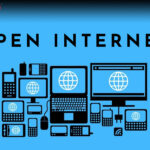Web 4.0, also known as the Intelligent Web, is the fourth generation of the World Wide Web. It is characterised by a more intelligent and interactive approach to web development, focusing on user experience, collaboration, and machine learning.
Web 4.0 builds on the foundations of previous web generations, such as Web 1.0 (static web pages) and Web 2.0 (interactive web pages). However, Web 4.0 takes things to the next level by incorporating artificial intelligence (AI), machine learning, and the Internet of Things (IoT) into web development.
This means that Web 4.0 websites and applications can learn from user behaviour and adapt to their needs. They can also interact with physical devices and systems in the real world. Before presenting WEB 4, let’s go over the history of the Web and attempt to grasp the evolution of this living creature that is now part of practically everyone’s life on the planet, whether you want it or not.
HISTORY OF THE INTERNET:
The first question to answer is WHY? Why did the internet come into being?
INTERNETWORKING:
Before the internet, communications were severely constrained in distance and data volume. The fundamental aim was to be able to interact between different networks. The mainframe computer was the most commonly used type, but it could not communicate data outside its LAN (Local Area Network).
In the 1960s and 1970s, MIT and UCLA labs made significant contributions to creating the first “Packet Switching” paradigm. The aim is to divide data into “packets” with the correct attributes delivered individually. Eventually, various routes may be delayed and queued based on network traffic.
The ARPANET’s earliest packet switching model is the internet’s predecessor. The X.25 and the UUCP were two more well-known types.
However, the number of gateways remained restricted. Therefore the next step was to create a network super-framework. It has to be independent of each network’s physical implementation.
The Internet Protocol was created.
WEB 2.0
Web 2.0 is a new manner of using the internet rather than a proper progression of its primary foundation.
Web 2.0 is an improved approach to exchanging information, interacting, communicating, and interoperating. Users contribute to the content of a website.
It is frequently associated with developing social networks (MySpace, Facebook), video sharing sites (YouTube), Wikis, and Blogs. It is also regarded as the forefather of web-based apps. RSS (Really Simple Syndication), XML, and Web API are all the rage.
WEB 3.0
Web 3.0 is frequently referred to as the “Semantic web.”
It incorporates numerous technologies to organize and organize data found on the internet to make it available and useable by programmes and applications via a metadata system.
The goal is to make the Web usable by machines and people.
The Resource Description Framework (RDF) provides the standards for such a metadata data model. It also includes the Web Ontology Language (OWL) and notations such as RDF Schema (RDFS).
SVG (Scalable Vector Graphics) fall between web 2.0 and web 3.0. Many websites are already using this technique to display animated information. Flash animations are already using this technology to give rich animated material without the weight of traditional “movie files.”
Even if the definition of web 3.0 has not yet been finalized, everyone agrees on its qualities. Web 3.0 must include the following features:

The main advantage is that anybody may use software to access a massive amount of structured data. There’s no need to spend hours searching the Web and visiting several websites to find helpful information. It will also allow access to the “Deep web” if properly constructed. A Google search usually offers access to the “Surface Web” (the most popular sites with a high Page Rank). However, there is a wealth of information beyond the surface.
WEB 4.0:
Web 4.0 is also known as the “Symbiotic Web”. The symbiotic Web’s idea is that humans and machines can interact in symbiosis once the metadata is organized (web 3.0). This means that we could build more powerful interfaces like mind-controlled interfaces.
However, let us be clear: web 4.0 is still a work in progress. There is currently no definition. People also discuss ambient intelligence, webOS, artificial intelligence, etc. Not even listed on the World Wide Web Consortium, I believe we will have to wait at least a couple of years before seeing any web 3.0 and even more for web 4.0. However, it is encouraging to know that several projects are underway in the digital world.








Pingback: IS THERE A WEB 4? | Intelligent Mobile Marketin...